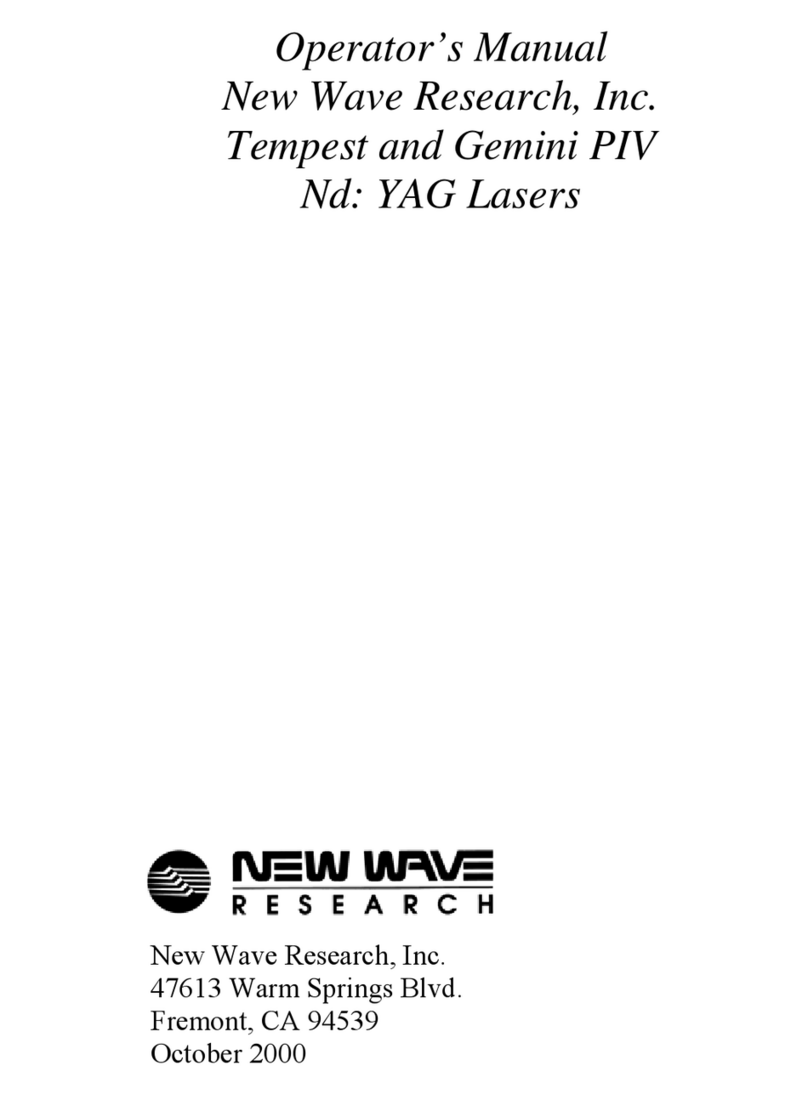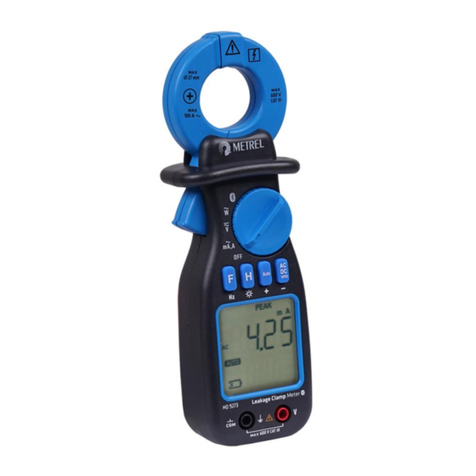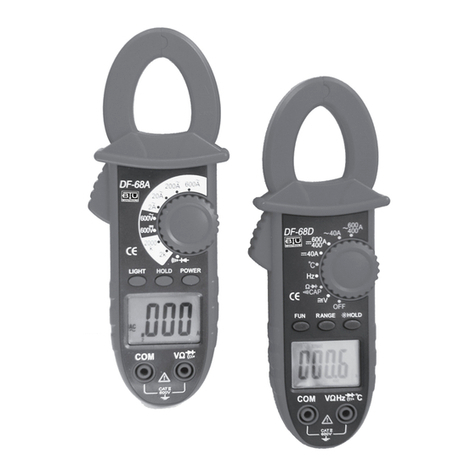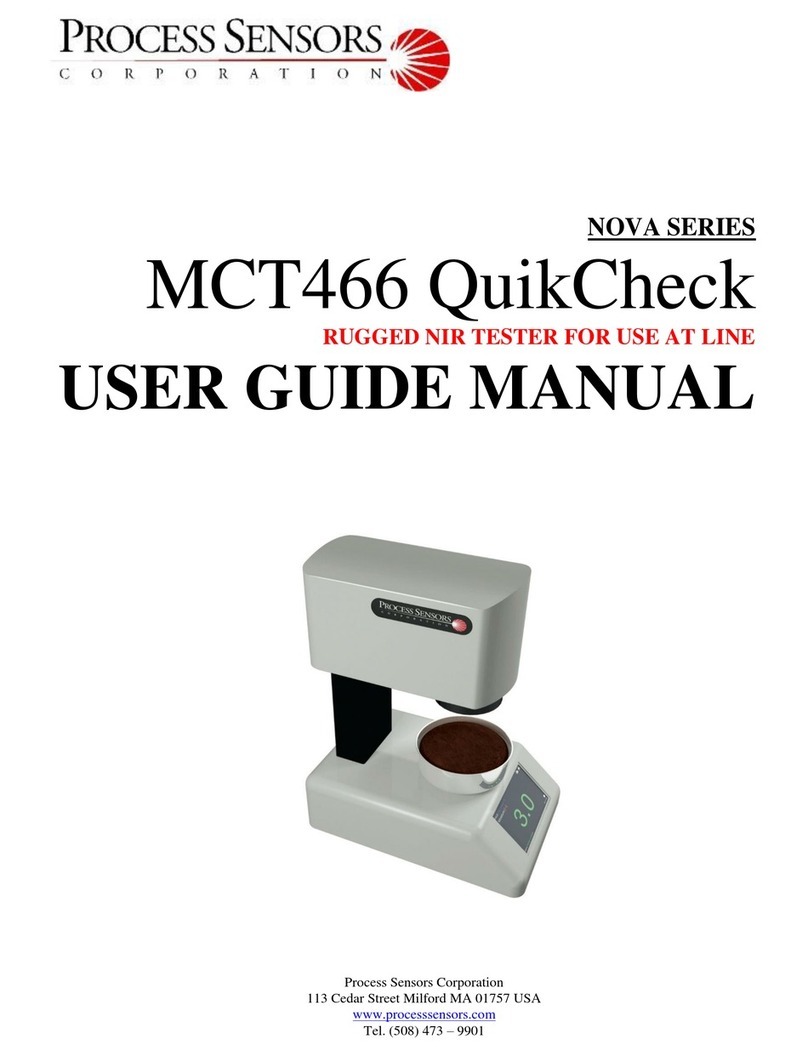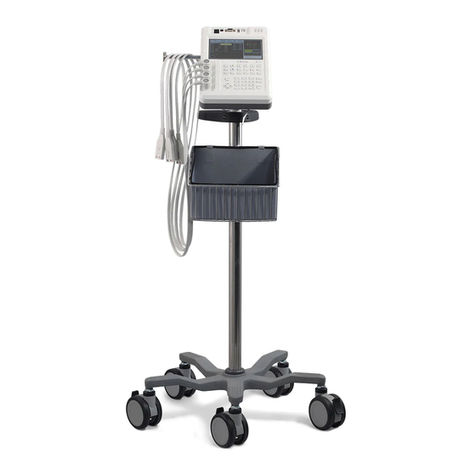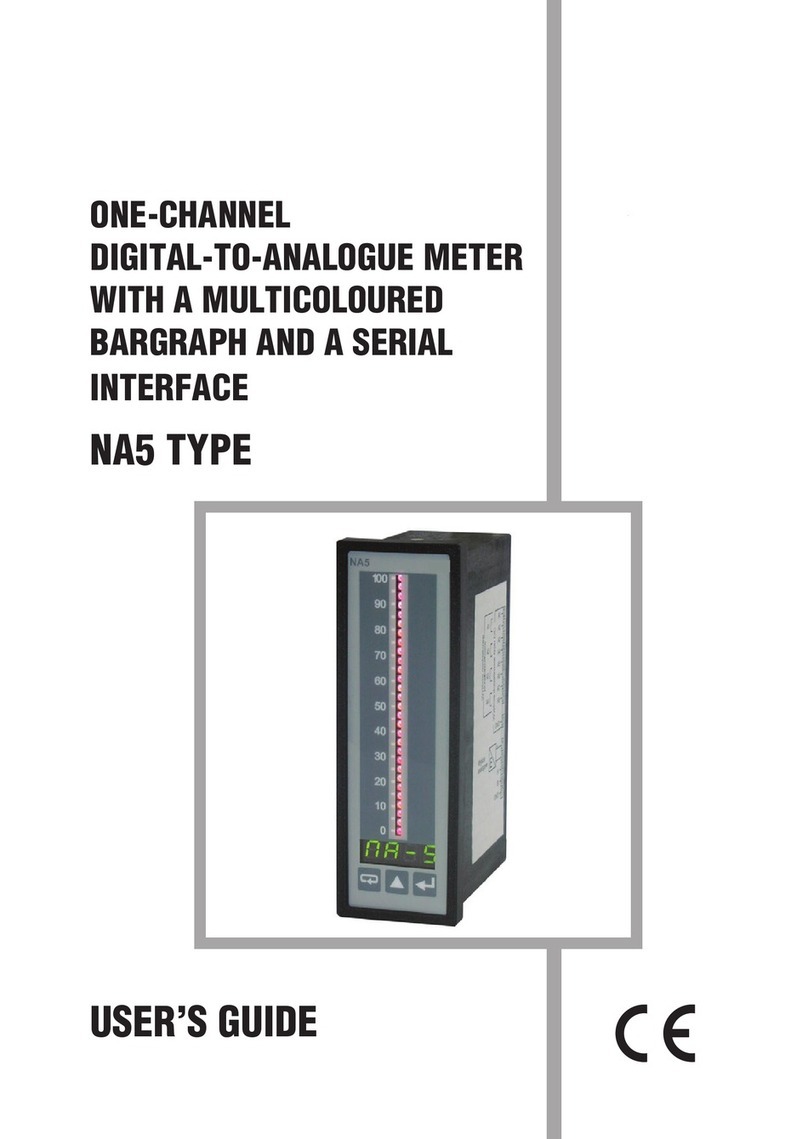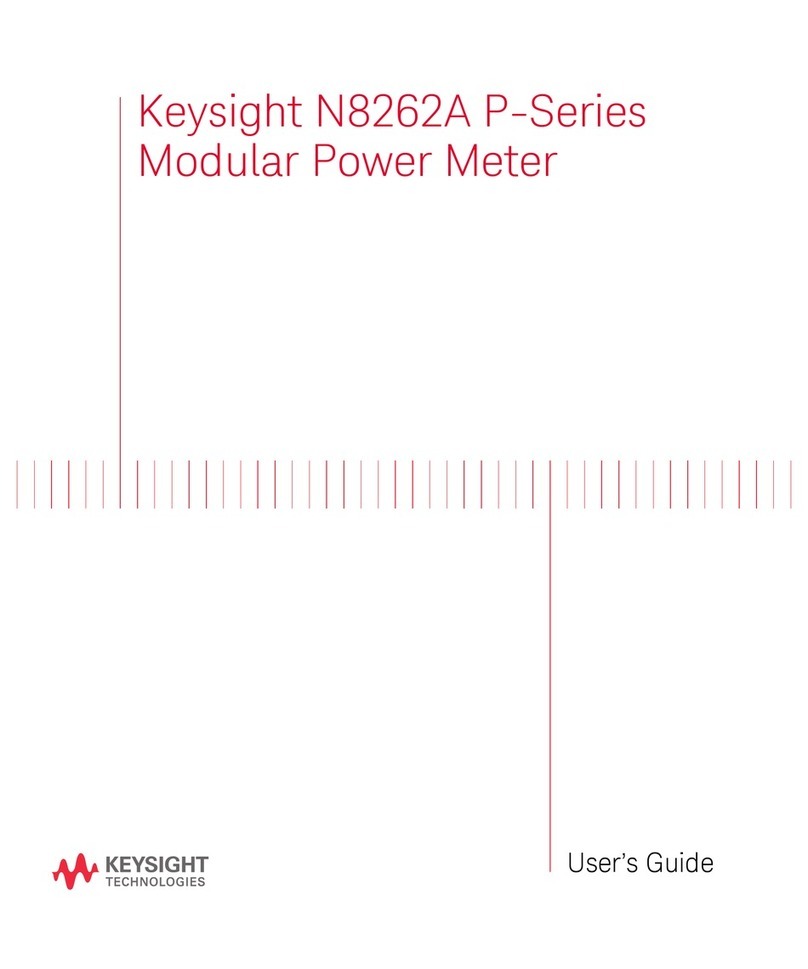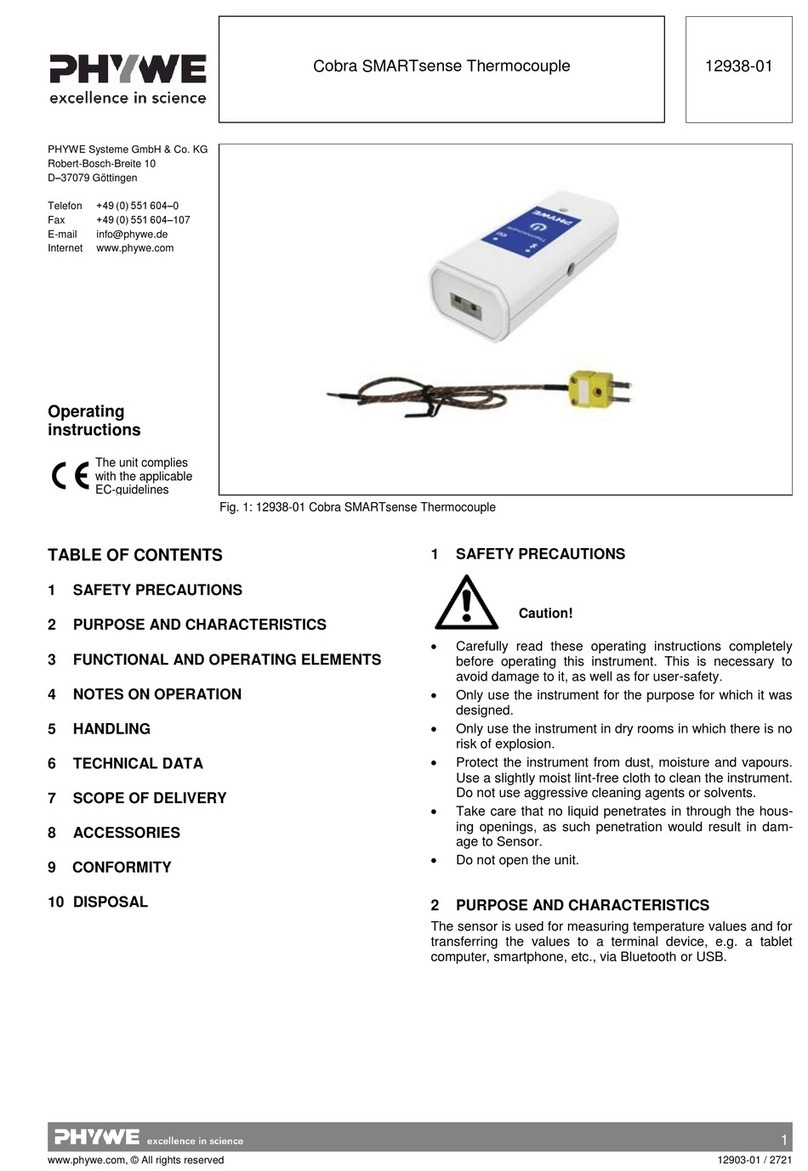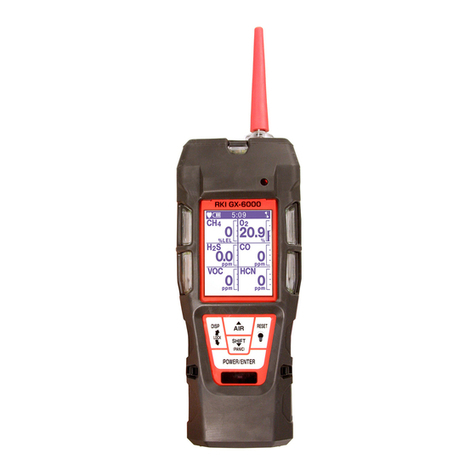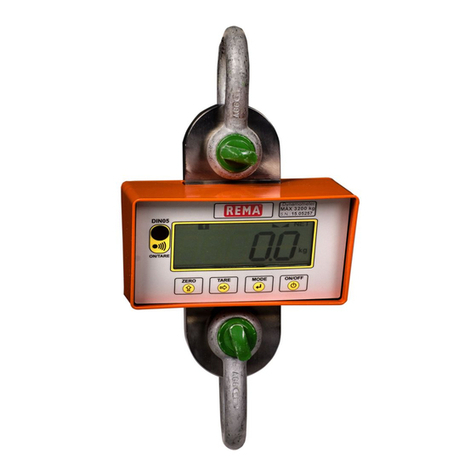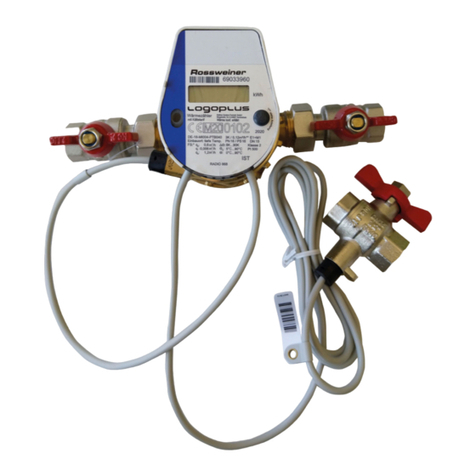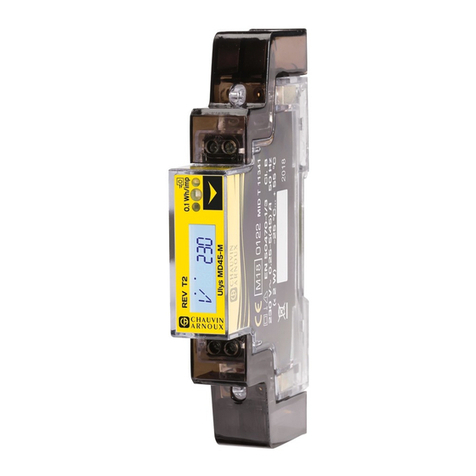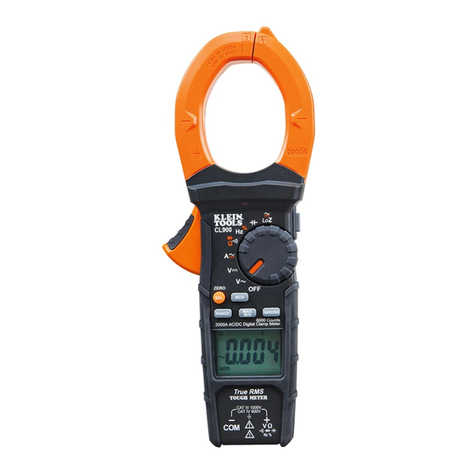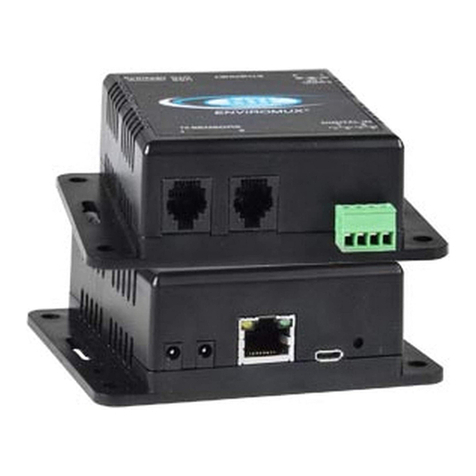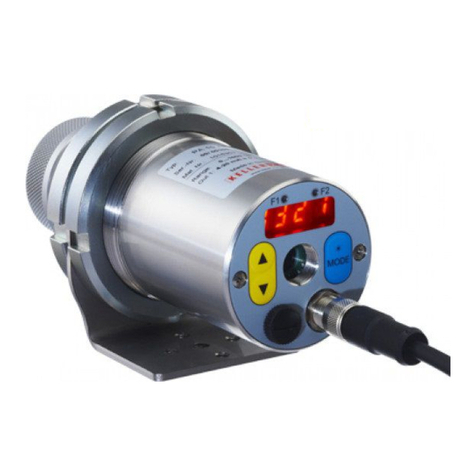New Wave Research Solo PIV I User manual

Solo PIV
Nd:YAG Laser System
Operator’s Manual
January 2005
Part No. 90-1020E

Solo PIV Operator’s Manual
New Wave Research
Preface
This manual contains information for proper installation and operation of the
Solo PIV and accessories. The Solo PIV laser systems comply with the Center
for Device and Radiological Health (CDRH) Standard 21 CFR 1040.
The Solo PIV laser systems are Class 4 lasers and emit laser radiation that
can be harmful to your eyes and skin. It is essential that the safety section of
this manual is read before installing this laser and that the user follows the
instructions given for safe laser operation.
Do not attempt to repair the laser while it is under warranty. Report all problems
to New Wave Research, Inc. for warranty repair.
New Wave Research, Inc. can be reached at:
48660 Kato Road
Fremont CA 94538
Tel: 510-249-1550
Tel: 800-566-1743
FAX: 510-249-1551
E-mail: customer-serv[email protected]
Web: http://www.new-wave.com
© Copyright 2002, 2003, 2004, 2005 by New Wave Research, Inc. All rights reserved. Printed
in the U.S.A. Reproduction or translation of any part of this publication, except as permitted by
the 1976 United States Copyright Act, without prior written permission of New Wave Research,
Inc. is unlawful.

New Wave Research
Table of Contents
Chapter One – Laser Safety
3 ...... Introduction
3 ...... Optical Safety
4 ...... Laser Safety
4 ...... Electrical Safety
5 ...... Safety Features
5.......Laser Covers
5.......Interlocks
5.......Exit Shutter
5 ...... Regulatory Compliance
6.......Laser Classification
6.......CE Declaration of Conformity
7.......Location of Safety Labels
Chapter Two – Description and Specifications
11 .... Introduction
11 .... Optical Layout
12.....Optical Attenuator
12.....Second Harmonic Generation
12.....Third Harmonic Generation (Solo 120)
12.....Fourth Harmonic Generation
12 .... External Control
13 .... Safety Interlocks
13 .... Power Supply
13.....AC Power
13.....Water Cooling System
14 .... Solo Specifications
Chapter Three – Installation
17 .... Voltage Requirements
17 .... Power Line Fuse
17 .... Laser Umbilical
18 .... Control Panel
18 .... Interlock Connector
18 .... Cooling System
Chapter Four – Operation
21.....Starting the Laser
22.....Turning the Laser Off
22.....Controls and Indicators
22.....Power Supply
23.....Control Panel
23.....Interlocks
23.....Internal Interlocks
23.....External Interlock
23.....Triggering and Timing
24.....Inputs and Outputs
25.....Internal Triggering
25.....External Triggering
26.....External Q-switch Triggering
27.....External Flashlamp Triggering
27.....External TTL Direct Triggering
27.....Harmonic Generators
28.....Second Harmonic Generator
29.....Solo PIV Alignment
Chapter Five – Maintenance, Service, and
Troubleshooting
33.....Maintenance and Service
33.....Recommended Scheduled Maintenance
33.....Cooling System
34.....De-ionization Cartridge Replacement
35.....Flashlamp Replacement
38.....Troubleshooting
38.....Observed Conditions
39.....Recommended Procedures
39.....Procedure 1. Laser does not start
39.....Procedure 2. Laser starts, but no light
is emitted
39.....Procedure 3. Low fundamental output
energy
40.....Procedure 4. Unstable laser energy
40.....Procedure 5. Clipped laser beam
40.....Procedure 6. Low second harmonic
energy

Solo PIV Operator’s Manual
New Wave Research
Figures and Tables
List of Figures
7 ...... Figure 1-1: Location of Labels
8 ...... Figure 1-2: Power Supply Identification
Label & Certification
8 ...... Figure 1-3: Laser Head Identification Label
8 ...... Figure 1-4: Solo I, II, III, IV Warning Label
8 ...... Figure 1-5: Solo 120 Warning Label
8 ...... Figure 1-6: Warning Label, International for
Solo I, II, III, IV
8 ...... Figure 1-7: Warning Label, International for
Solo 120
8 ...... Figure 1-8: Aperture Label
8 ...... Figure 1-9: Defeatable Interlock Label
11 .... Figure 2-1: Layout of Solo Head with
Options
17 .... Figure 3-1: Power Supply Back Panel
21 .... Figure 4-1: Control Panel Layout
24 .... Figure 4-2: Power Supply BNC input/output
Connections
25 .... Figure 4-3: Timing Diagram for Internal
Triggering
26 .... Figure 4-4: Timing Diagram for External
Triggering
28 .... Figure 4-5: Half Wave Plate Adjustment
28 .... Figure 4-6: Second harmonic Angle
Adjustment
29 .... Figure 4-7: Solo PIV Beam Overlap
Adjustment
34 .... Figure 5-1: Cooling System in the Power
Supply
35 .... Figure 5-2: Removing Leads to Replace
Flashlamp for Solo I, II, III
35 .... Figure 5-3: Removing Leads to Replace
Flashlamp for Solo 120 and IV
36 .... Figure 5-4: Pump Chamber Attachment
Screws for Solo I, II, III
36 .... Figure 5-5: Pump Chamber Attachment
Screws for Solo 120 and IV
37 .... Figure 5-6: Removal of Pump Chamber
Assembly End Cap for Solo I, II, III
37 .... Figure 5-7: Figure 5-7. Removal of Pump
Chamber Assembly End Cap for Solo 120
and IV
37 .... Figure 5-8: Pump Chamber Water Seal O-
rings for Solo I, II, III
38 .... Figure 5-9: Pump Chamber Water Seal O-
Rings for Solo 120 and IV
List of Tables
14.....Table 2-1: Solo Performance Specifications
27.....Table 4-1: TTL Direct Port
38.....Table 6-1: Observed Conditions

Chapter One
Laser Safety

Solo PIV Operator’s Manual
2 New Wave Research

Laser Safety
New Wave Research 3
Introduction The New Wave Research Solo Nd:YAG laser is a high performance laser that
requires care in handling. As with any high power laser system, it is important
that every person who works with the laser is trained in the safe operation. It is
also important that each person who works in the area is aware of necessary
procedures to safely turn the laser off.
The Solo-PIV laser system is designed for Particle Image Velocimetry (PIV).
The Solo-PIV consists of two IR laser heads combined in a single package with a
second harmonic generator and one discrete power supply.
Optical Safety The Solo Nd:YAG laser generates high-energy infrared radiation that can pose
serious risks to eye safety. Infrared radiation is invisible to the eye, so the hazard
is not immediately obvious, but the radiation can be focused onto the retina. For
this reason it is very important to always wear safety glasses and to be aware of
any possible reflections.
WARNING: The New Wave Research Solo Nd:YAG laser is a Class 4 high
power laser whose beam is, by definition, a safety and fire hazard. Take all
necessary precautions to prevent accidental exposure to both direct and
reflected beams. DIFFUSE AS WELL AS SPECULAR BEAM
REFLECTIONS CAN CAUSE SEVERE EYE AND SKIN DAMAGE.
WARNING: BECAUSE THE 1064nm OUTPUT BEAMS OF AN ND:YAG
LASER ARE INVISIBLE THEY ARE EXTREMELY DANGEROUS.
Infrared radiation passes easily through the cornea, which focuses it onto
the retina in the eye, where it can cause instantaneous permanent damage
including blindness. AVOID EYE AND SKIN EXPOSURE TO DIRECT
OR SCATTERED RADIATION.
WARNING: CAUTION: USE OF CONTROLS, ADJUSTMENTS OR
PERFORMANCE OF PROCEDURES OTHER THAN THOSE
SPECIFICIED HEREIN MAY RESULT IN HAZARDOUS RADIATION
EXPOSURE.
Follow the instructions contained in this manual for proper installation
and safe operation of your laser. Wear protective eyewear; selection
depends on the energy and wavelength of the laser beam as well as
operating conditions. Consult ANSI, ACGIH or OSHA standards for
guidance. ANSI standard (ANSI Z136.1-2000) is available from Laser
Institute of America
At all times during installation, operation, maintenance or service of your
laser, avoid exposure to laser or collateral radiation exceeding the
accessible emission limits listed in “Performance Standards for Laser
Products,” 21 CFR 1040 10(d).

Solo PIV Operator’s Manual
4 New Wave Research
Laser Safety Laser light poses safety hazards that are not associated with conventional light
sources. Special precautions must be observed when working with the Solo
Nd:YAG laser. The safe use of lasers requires that all laser users, and people
working in the same area as the laser, are aware of the dangers involved.
Laser beams are intense enough to burn skin, clothing or paint. They can
ignite volatile substances such as alcohol, or other solvents. The beam may
also cause damage if reflected from some other surface. For this reason it
is important that the following precautions are observed.
●Keep the protective cover on the laser head at all times.
●Avoid looking at the output beam, even diffuse reflections are hazardous.
●Treat back reflections from any optic surface as you would the main laser
beam. Even though the energy of such reflections is only a fraction of that
contained in the main beam, it is sufficient to cause serious bodily harm,
especially to the eye.
●Use protective eyewear at all times. Selection depends on the wavelength
and the intensity of the radiation, the conditions of use, and the visual
function required.
●Operate the laser at the lowest beam intensity possible, given the
requirements of the application.
●Expand the beam wherever possible to reduce beam intensity.
●Avoid blocking the output beam or its reflection with any part of the body.
●Use an IR detector or energy detector to verify that the laser beam is off
before working in front of the laser.
●Establish a controlled access area for laser operation. Limit access to those
trained in the principles of laser safety.
●Maintain a high ambient light level in the laser operation area to constrict the
pupil of the eye, reducing the possibility of injury.
●Post warning signs prominently near the laser operation area.
●Provide enclosures for beam paths whenever possible.
●Set up an energy absorbing target to capture the laser beam, preventing
unnecessary reflections and scattering.
●Do not open laser head or power supply. Dangerous voltages and laser
energies are present.
Electrical
Safety
The laser head and power supply contain electrical circuits operating at lethal
voltage and current levels. Do not attempt to operate the laser with the power
supply cover or laser head cover removed. For service, please contact New
Wave Research at 47613 Warm Springs Blvd. Fremont, CA, 94539. The phone
number for New Wave Research is (510) 249-1550; Fax (510) 249-1551.

Laser Safety
New Wave Research 5
Certain procedures such as changing the flash lamp, water filter, or cleaning
optical components require removal of the protective systems. It is important
that all safety precautions outlined in this manual are observed by anyone using
the laser. The most important rule when performing maintenance procedures on
this laser is to unplug the power cord from the electrical outlet.
There are no user serviceable parts on the electrical side of the power supply.
Service procedures on system electronics must be carried out by New Wave
Research.
Safety
Features
The following features are built into the Solo Nd:YAG lasers to conform to
government regulations and provide safe laser operation.
Laser Covers The Solo laser head is enclosed in a protective housing that prevents access to
radiation in excess of Class I limits, except for the output beam, which is Class
IV. The cover also protects against stray radiation from the Solo. Do not remove
the cover, except to perform maintenance procedures by a trained person.
Interlocks The Solo Nd:YAG laser system has a series of interlocks to prevent accidental
exposure to dangerous levels of electricity or radiation. In addition, there are
interlocks designed to interrupt laser operation if the laser may be damaged. The
interrupts are the following
●Laser head cover opened.
●Laser head umbilical detached
●Cooling water temperature too high
●Cooling water flow too low
●Remote interlock interrupted (if installed)
Exit Shutter The Solo has an exit beam shutter located on the laser head housing. The laser
beam may be blocked by closing the shutter. Do not use the exit beam shutter as
a method of blocking the beam for more than a few seconds. Turn off the laser if
the output beam is not needed for longer time periods.
Regulatory
Compliance
New Wave Research suggests that laser users purchase a copy of the American
National Standard for the Safe Use of Lasers (ANSI Z136.1-2000). This
publication provides recommendations for the safe use of lasers and laser
systems that operate at wavelengths between 180nm and 1 mm. The publication
is available from the following:
Laser Institute of America
13501 Ingenuity Dr., Suite 128
Orlando, FL 32826
Tel: (407) 380-1553
Fax: (407) 380-5588
www.laserinstitute.org/onlinestore/

Solo PIV Operator’s Manual
6 New Wave Research
Laser
Classification The governmental standards and regulations specify that the laser must be
classified according to the output power or energy and the laser wavelength. The
Solo is classified as Class IV based on 21 CFR, subchapter J, part II, section
1040-10 (d). According to the European Community standards, the Solo is
classified as Class 4 based on EN 60825-1, clause 9. This manual and other
documentation for the Solo will refer to the classification as Class 4.
CE Declaration of
Conformity Following is the CE Declaration of conformity for the Solo PIV laser system.
Declaration of Conformity
We, New Wave Research, Inc. hereby declare that under our sole responsibility
the products:
Dual head Nd:YAG Laser System
Model Numbers: Solo PIV I, II, III, IV, and 120
Are in conformity with the provisions of the following EC directives:
●Low Voltage Directive 73/23/EEC
●EMC Directive 89/336/EEC
Standards to which Conformity is Declared:
●EN 61010-1:2001, EN 60825-1: 1994+A11:1996+A2 2001
●EN 01326-1: 1997+A1: 1998+A2: 2001
TUV Report and License No’s:
P2072123, E2072122, T2072139, CU2072486
Manufacture's Name and Address:
New Wave Research
48660 Kato Road.
Fremont CA 94538
USA
Date CE Mark Affixed: 2000, 2001
Place: Fremont, CA Date: January 2004
Edward North
VicePresident, Quality

Laser Safety
New Wave Research 7
Location of Safety
Labels Figure 1-1 shows the location of all labels for the Solo laser system. The labels
are for safety, certification and identification, and a copy of each label is shown
in the following figures.
Figure 1-1: Location of Labels

Solo PIV Operator’s Manual
8 New Wave Research
Figure 1-2: Power Supply Identification Label &
Certification
Figure 1-3: Laser Head Identification Label
Figure 1-4: Solo I, II, III, IV Warning Label
Figure 1-5: Solo 120 Warning Label
Figure 1-6: Warning Label, International for Solo I, II, III,
IV
Figure 1-7: Warning Label, International for Solo 120
Figure 1-8: Aperture Label
Figure 1-9: Defeatable Interlock Label

Chapter Two
Description
And Specifications

Solo PIV Operator’s Manual
10 New Wave Research

Description and Specifications
New Wave Research 11
Introduction This chapter provides an introduction to the Solo Nd: YAG laser system. The
optical layout of the head is explained in the following section. This section also
includes the location of the harmonic generator. A summary of system
specifications is given on the last page of this chapter.
Optical Layout This section gives an introduction to the optical layout in the Solo Nd: YAG
laser. The standard Solo configuration is a dual head laser with second harmonic
generator body, and room for installing the optional attenuator. The system is
shown with optional items in Figure 2-1.
Solo Laser Head Layout – 532 nm
Solo Laser Head Layout – 266 nm
Figure 2-1: Layout of Solo Head with Options

Solo PIV Operator’s Manual
12 New Wave Research
The Solo employs a dual flash lamp-pumped Nd: YAG rod head in a thermally
compensated resonator to generate radiation at 1064nm. The resonator is very
compact, mechanically isolated from the laser housing, which makes the system
relatively insensitive to vibrations and temperature change. The IR heads are
housed in a separate sealed area that requires no adjustments in normal operation.
The only time the IR heads need to be opened is on the rare occasion that a flash
lamps needs to be changed during a maintenance procedure.
Optical Attenuator The optional optical attenuator serves to control the laser energy without
affecting the beam quality. The optical attenuator is designed to work on the
532nm beam, so it is placed directly after the second harmonic generator.
The optical attenuator consists of a half wave plate, followed by a polarizer. The
half wave plate is secured to a motorized rotating mount. The servo motor
controlled angle is set by input from the control panel. The polarizer is
permanently aligned to transmit vertically polarized light.
Second Harmonic
Generation The 1064nm-laser pulse exits the IR head. The second harmonic at 532nm is
generated by passing the IR beam through an angle tuned KTP crystal. The Solo
uses Type II phase matching in KTP to generate the second harmonic, so the
polarization of the IR beam must be adjusted to maximize SHG intensity.
Dichroic mirrors separate the second harmonic from the fundamental light and
direct the beam to the output port. The second harmonic light is vertically
polarized.
Third Harmonic
Generation
(Solo 120)
The third harmonic generator (THG) crystal may be used to provide UV radiation
at 355 nm. It is for single-head operation only. The third harmonic generation
process is Type I in BBO, created with horizontally polarized fundamental and
second harmonic light. A half wave plate for the second harmonic is mounted on
the input to the THG housing. The third harmonic output is vertically polarized.
Fourth Harmonic
Generation The fourth harmonic of Nd: YAG at 266 nm can be generated by doubling the
532 nm second harmonic light. This is done by placing the correct BBO crystal
in the optical path and combining two photons at 532 nm to give one photon at
266 nm. The light at 266 nm is separated using a pair of dichroic mirrors to
select only the fourth harmonic light. The fourth harmonic light is vertically
polarized.
External
Control
The laser system can be fired externally by a pulse generator using the BNC
connectors. The laser may also be controlled externally using the TTL Direct
Port. TTL signals can be sent to the laser power supply through the female DB
15 connector.

Description and Specifications
New Wave Research 13
Safety
Interlocks
One internal interlock, one external interlock, and one mechanical shutter provide
protection to the user(s). A cooling water flow interlock switch and a high
temperature interlock switch protect the laser system. Opening the laser head
trips the internal interlock. The external interlock connector is located at the rear
of the power supply, and can be shorted with the supplied connector. The user
can install a safety interlock switch to a door or some other device and then
electrically connect the switch to the external interlock connector to provide
increased safety when using the laser.
Power Supply The power supply controls the Solo Nd: YAG laser, supplying the required
power and signals to safely operate the laser. The Solo power supply is built on
three levels, with functional groups separated on the three different levels. The
top level contains logic level electronics. The middle level contains the high
voltage power supply and simmer electronics. The bottom level contains the
cooling system.
AC Power The power input module brings AC power to the laser. The power input module
contains an AC power On/Off switch.
Water Cooling
System The closed loop water cooling system is located completely on the lower level of
the power supply. A water pump circulates the de-ionized water from the water-
to-air heat exchanger to the laser head. The water circulates through the laser
head pump chamber to keep the temperature of the YAG rod at an acceptable
level. Part of the water flow is directed through a de-ionization cartridge to
maintain the water purity. The cooling control board controls the fan attached to
the heat exchanger and monitors the temperature sensor to ensure that the laser
operates within temperature specifications.

Solo PIV Operator’s Manual
14 New Wave Research
Solo
Specifications
The following tables show the Solo specifications for the different models
available. Specifications are subject to change without notice.
Solo PIV Products
Solo I-15 Solo II-15 Solo II-30 Solo III-15 Solo IV-50 Solo 120
Re
p
etition Rate
(
Hz
)
15 15 30 15 50 15
532 15 30 30 50 50 120
355
–
–
–
–
–
35
Energy1(mJ)
266 NA NA NA NA NA 25
532 4 4 4 4 6 4
355
–
–
–
–
–
7
Energy Stability2(±%)
266 NA NA NA NA NA 9
Beam Diameter
(
mm
)
2.5 2.5 2.5 3.5 3.5 4.5
Pulse Width3
(
ns
)
3-5 3-5 3-5 3-5 3-5 3-5
Diver
g
ence4
(
mrad
)
< 3 <3 <3 <4 <5 <2
Beam Pointin
g
Stabilit
y
(
urad
)
<100 <100 <100 <100 <200 <100
Jitter
(
±ns
)
1 1 1 1 1 1
1. Optical losses due to optional attenuator will reduce maximum energy by 10%
2. Pulse-to-pulse for 98% of shots after 30 minute warm up
3. Full width half maximum
4. Full angle for 86% of the energy, at 1/e2point
5. For single-head operation. Only one laser may be
optimized for 355 nm.
Physical Characteristics
Laser Head* Power Supply
Solo I, II, III Solo IV, 120 Solo I, II, III Solo IV Solo 120
Len
g
th 13.775” / 350 mm 16.06”/408 mm 18.5” / 470 mm 21.2” / 538 mm 19.0”/483 mm
Width 7.0” / 178 mm 8.0”/203 mm 8.875” / 200 mm 10.6” / 269 mm 8.6”/218 mm
Hei
g
ht 3.187” / 81 mm 4.125”/105 mm 14.375” / 365 mm 15.16” / 385 mm 15.0”/38 mm
Wei
g
ht 10 lbs. / 4.5 k
g
21.5 lbs./9.8 k
g
48 lbs. / 22 k
g
53 lbs. / 24 k
g
55 lbs/25 k
g
Len
g
th Umbilical 8 ft / 2.4 m 8 ft / 2.4 m
* Width and Height include mounting plate Operating Requirements
Tem
p
erature 70° ± 10° F
(
21° ± 5° C
)
Relative Humidit
y
20
—
80% non-condensin
g
Volta
g
e 95
—
240 V, 50/60 Hz
Solo I, II, III 15 Hz-300 watts; 30 Hz-500 watts
Solo 120 500 watts
Power
Solo IV 1500 watts
Table 2-1: Solo Performance Specifications

Chapter Three
Installation

Solo PIV Operator’s Manual
16 New Wave Research
This manual suits for next models
4
Table of contents
Other New Wave Research Measuring Instrument manuals
